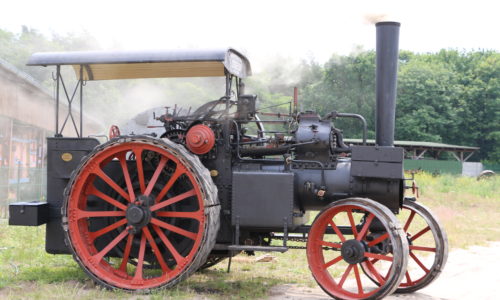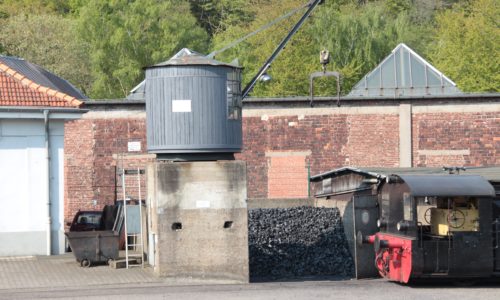Hathorn Davey triple expansion engine
Triple expansion engines use three expansion stages. The engines use a series of double-acting cylinders of progressively increasing diameter. These cylinders are designed to divide the work into three equal portions, one for each expansion stage.
Compared to the beam engines at London Museum of Water & Steam this engine is of fairly modern design and represents the most common type of pumping engine built for waterworks after about 1900. It is usually considered to be an intermediary stage in development between beam engines and internal combustion engines. The cylinders are inverted and placed in a line directly over the crankshaft in much the same way as a modern car engine.
The idea for using such engines in waterworks came from America around 1880 and soon gained popularity. The engine was donated to the museum by the Anglian Water Authority.
Due to headroom restrictions, the pumps are no longer fitted to this engine.
Date of manufacture 1910
Manufacture Hathorn Davey & Co, Leeds
Cylinder Diameter 12, 20 & 31 inches (304, 508 & 787mm)
Stroke 30 inches (762 mm)
Flywheel Diameters 16 feet (4.8 metres)
Water output per minute 1000 Gallons (4546 litres)
Water output per 24 hours 1.4 M Gallons (6.3 M litres)
Power Rating 108 horse power at 39 r.p.m
Last worked 1964
Returned to steam 1980
Sound recordist: Ben Minto/Soundkids
Video: Tony Cox, YouTube
Specs:
Filesize:
Duration:
Channels:
11.2 MB
1 min 3 s
2 (Stereo)
Bit rate:
Bit depth:
1411 kb/s
16 bit
Recorded on December 31, 2000
Water Mill
London, UNITED KINGDOM
Creative Commons License




